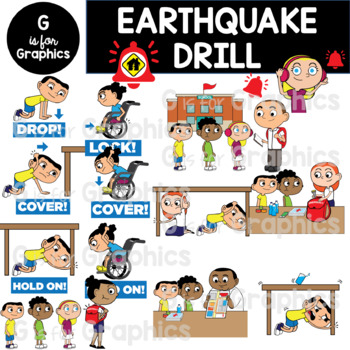Earthquake Preparedness and Response in Libraries: Policies and Procedures
Libraries in earthquake-prone regions face unique challenges in ensuring the safety of their patrons, staff, and collections. To mitigate the risks associated with seismic activity, these institutions implement a range of policies and procedures designed to minimize damage and enable rapid recovery. This week, in light of

One of the primary concerns for libraries in earthquake zones is the structural integrity of their buildings. Many libraries have adopted seismic retrofitting measures to strengthen their facilities and reduce the risk of collapse during an earthquake. These retrofits may include reinforcing walls, foundations, and roofs, as well as installing seismic dampers and base isolators (Astroza et al., 2012). Additionally, libraries often work closely with structural engineers to ensure that their buildings meet or exceed local seismic building codes (Filiatrault et al., 2013).
In addition to structural enhancements, libraries in earthquake zones typically develop comprehensive emergency response plans. These plans outline the roles and responsibilities of staff members during an earthquake, as well as procedures for evacuating the building and ensuring the safety of patrons (Di Sarno, 2005). Regular earthquake drills are conducted to familiarize staff and patrons with emergency protocols and to identify areas for improvement in the response plan (Ghaemmaghami et al., 2018).
To protect valuable collections from earthquake damage, libraries often implement specialized storage and display solutions. Seismic shelving systems, which feature restraining devices and reinforced brackets, help prevent books and other materials from falling during an earthquake (Dhakal et al., 2024). Fragile or high-value items may be stored in earthquake-resistant cabinets or display cases equipped with locking
Another critical aspect of earthquake preparedness in libraries is the development of recovery plans. These plans outline the steps necessary to resume library operations as quickly as possible following an earthquake, including assessing damage, salvaging materials, and restoring essential services (Cervone, 2019). Many libraries also maintain off-site backup copies of critical data and records to facilitate recovery efforts (Breeding, 2015).
Collaboration with local emergency management agencies and other community organizations is also crucial for libraries in earthquake zones. By establishing strong partnerships and communication channels, libraries can better coordinate their response efforts and access essential resources in the aftermath of an earthquake (Veil & Bishop, 2014).
Libraries in earthquake zones employ a multifaceted approach to earthquake preparedness and response. By investing in structural retrofits, developing comprehensive emergency plans, implementing specialized storage solutions, and collaborating with community partners, these institutions strive to ensure the safety of their patrons, staff, and collections in the face of seismic threats. As the world continues to grapple with the challenges posed by earthquakes, the policies and procedures adopted by libraries in these regions serve as a model for resilience and preparedness.
Sources:
- Noennig, Anita (1983). Conferences, Meetings, Lectures: Reducing Earthquake Risk to Collections–Museums, Libraries, Galleries & Laboratories
. WAAC, 5(1).
- Astroza M, Ruiz S, Astroza R. Damage Assessment and Seismic Intensity Analysis of the 2010 (Mw 8.8) Maule Earthquake. Earthquake Spectra. 2012; 28(1_suppl1):145-164. doi:10.1193/1.4000027
- Breeding, M. (2015). Disaster recovery and business continuity for libraries. Computers in Libraries, 35(9), 32-34.
- Cervone, H. F. (2019). Disaster recovery and continuity planning for libraries. Journal of Library Administration, 59(7), 781-800.
- Filiatrault, A., Perrone, D., Merino, R. J., & Calvi, G. M. (2013). Performance-based seismic design of nonstructural building components: The next frontier of earthquake engineering. Earthquake Engineering and Engineering Vibration, 12(1), 1-12.
- Ghaemmaghami, A., Mosleh, M., & Salami, M. (2018). Earthquake preparedness and response in Iranian libraries: A survey study. International Journal of Disaster Risk Reduction, 31, 393-402.
- Dhakal, R. (2024). Seismic design of buildings: Where to next? Bulletin of the New Zealand Society for Earthquake Engineering, 57(1), 1–17. https://doi.org/10.5459/bnzsee.1680
- Marchionini, G., & Moran, B. B. (Eds.). (2012). Information professionals 2050: Educational possibilities and pathways. School of Information and Library Science, University of North Carolina at Chapel Hill.
- Veil, S. R., & Bishop, B. W. (2014). Opportunities and challenges for public libraries to enhance community resilience. Risk Analysis, 34(4), 721-734.
- Di Sarno, L. and Elnashai, A.S. (2005), Innovative strategies for seismic retrofitting of steel and composite structures. Prog. Struct. Engng Mater., 7: 115-135. https://doi.org/10.1002/pse.195
